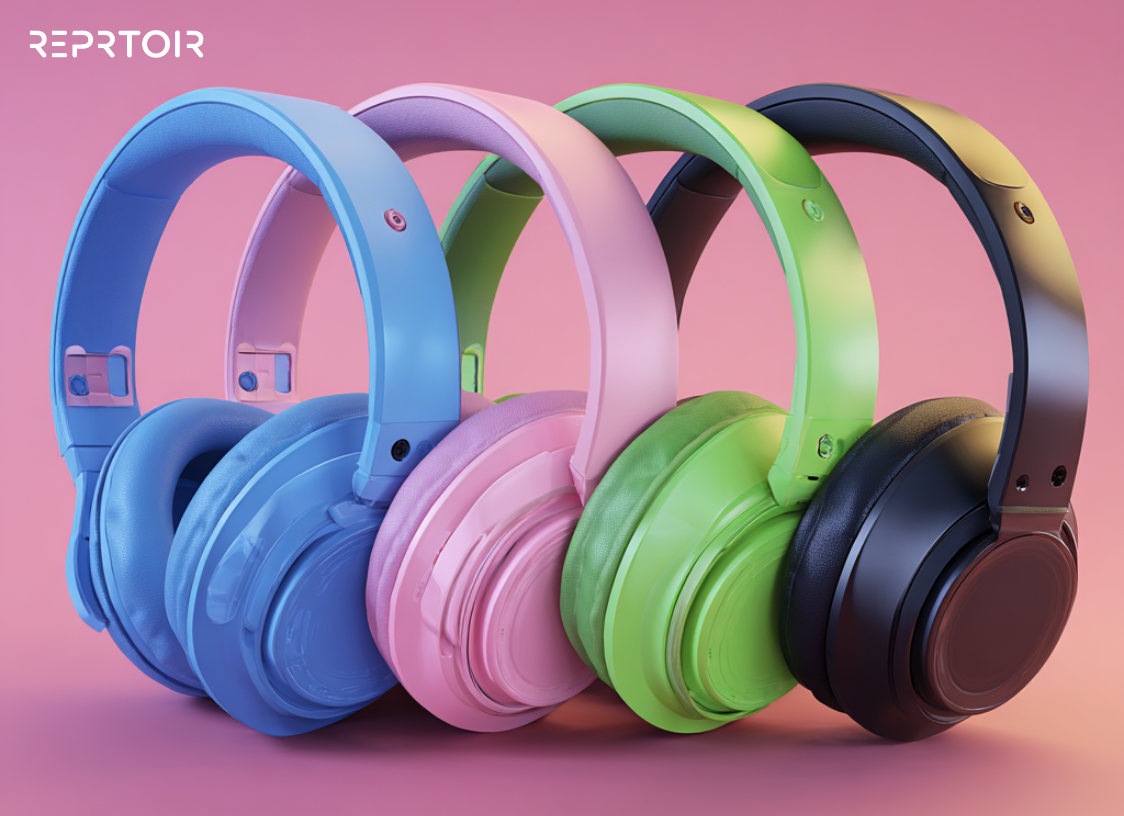The sudden shake of Covid-19 in 2020 has rocked the music industry in a variety of ways. With the decline of live performances, artists and record labels have seen a sudden downturn in that revenue space. However, streaming and music downloads have been on a meteoric rise as people are tuning in to their favorite artists, and those artists are now earning more music royalties in a revenue stream they thought way less of before they couldn’t rely on live music (especially when it comes to emerging artists)..
The issue now is: How do music royalties work? As before, artists and publishers didn’t have to consider royalties much--royalties were just handled by an organization, and money was paid out--but now artists and publishers must rely on them. Reprtoir is here to offer a quick overview of what royalties are and the current issues around today’s music rights.
What Are Royalties?
The most essential definition of a music royalty is a payment for the use of the artist’s music to the music right’s owner. Outside of the artist’s and publisher’s direct use of the music, any music that has been streamed, bought, or performed by a third-party must pay royalties under copyright law (according to the different countries’ regulations). To compound the world of royalties, there are two types of royalties: Performance and mechanical royalties.
Performance Royalties
Performance royalties are fees paid for a public performed or distributed piece of music. Think of these as radio, public businesses like restaurants, and “online radio” like Pandora or the discoverable sections of Spotify.
Performance royalties are set apart from the next royalty, mechanical royalties, by being broadcast in such a way that the listener has very little control over what they listen to. Thus the platform or owner playing this music must pay performance royalties for using this music.
The special thing about performance royalties is that there are dedicated organizations called Performance Rights Organizations (PROs) like SESAC and BMI in the United States. These PROs collect data and royalties to pay to the music rights holders so for the most part these performance royalties are managed.
Mechanical Royalties
Mechanical royalties are paid out from music that has been sold or specifically selected to be played. Think of this as either purchasing physical (mechanical) media, paying for digital downloads, or selecting a specific artist to listen to on Spotify.
Since the listener has control of what they listen to, mechanical royalties have a set rate of payout set by the US government to around 9 cents of each dollar earned for the sale or streaming revenue. These royalties are paid directly from the retailer or service provider to the music rights holders.
The Current Issues with Music Royalties Today
The current events are turning heads on the importance of performance and mechanical royalties. Artists, songwriters, and record labels are relying far more on streaming services for revenue. As an example, Spotify stated in their quarterly findings a rise in their total number of active users in Q3 of 2020 by 29% and a striking rise in premium users of 27%. This means with Spotify streaming more music, the more important it is for rights holders to understand and follow up closely on royalties and how they are paid.
Popular apps like TikTok are becoming an odd situation for the music industry. TikTok broadcasts short clips of an artist’s music, not exactly broadcast nor selective, and earns money from users paying into the app to support the content creators that use this music. While there is a case to be said of music exposure, such as the sudden rise of Nas X’s “Old Town Road”, the indiscriminate use of music without paying royalties does not directly support rights holders. However, some music industry giants such as Sony Music Entertainment have made licensing deals with TikTok to allow the app to use Sony’s artists’ music on the app. In the future, licensing deals can be made between TikTok and rights holders to better support each other.
In addition to an already complex situation, a new law in America has been put into place on January 1st, 2021 called the Music Modernization Act which puts renewed enforcement and closes loopholes in the copyright law regarding mechanical royalties. What this law will fully bring to the music industry is still under debate. However, one good point is the law establishes the Mechanical Licensing Collective (MLC) that works as a PRO to manage data and royalties. The MLC also changes the standard rate of royalties from 9 cents to a market-based system of willing sellers and willing buyers that can work out rates on their own.
Reprtoir Royalties Manager
Well looking at this situation, music rights management seems like it’s getting even more complicated and complex to manage, whether we’re talking about record labels or music publishers. This is why we decided it was time to release our brand new Reprtoir solution: Royalty Management Solution.
Reprtoir Royalties Manager is a new royalties management software for music professionals. It helps record labels and publishers manage rights holders, contributors, expenses, incomes, royalty splits, and many different types of royalty revenue streams in minutes. One workspace for all your music business data, your team and catalog. Book yourself a free demo with us right now!








